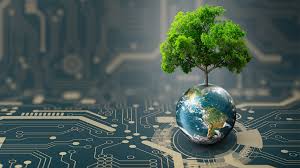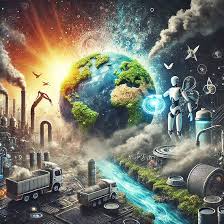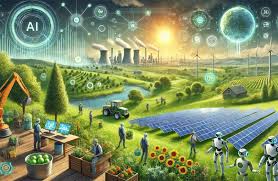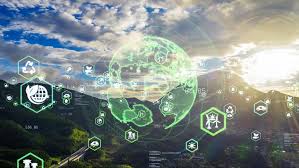
🌱” AI Is Helping Heal the Earth — Discover the Tech Driving Climate Solutions 2030″

The climate crisis is one of the greatest challenges humanity has ever faced—but there’s reason for hope. As nations, businesses, and communities rally to protect the planet, a powerful tool is stepping up to make a difference: Artificial Intelligence (AI).
From predicting extreme weather to preserving forests and optimizing clean energy, AI is doing more than just analyzing data—it’s actively helping to heal the Earth.
As the global climate crisis intensifies, the world is turning to technology for answers—and artificial intelligence (AI) is emerging as a powerful ally. From smarter energy systems to protecting forests and predicting extreme weather events, AI is helping scientists, governments, and businesses take more effective action in the fight against climate change.
Artificial Intelligence (AI) is emerging as a powerful force in the global effort to combat climate change. From optimizing renewable energy systems to monitoring deforestation, AI is enabling smarter, faster, and more effective environmental action. This technology is being used to forecast extreme weather events, manage resources more efficiently, and protect ecosystems with real-time data analysis. In agriculture, AI supports sustainable farming by helping farmers reduce waste and improve yields, while in cities, it powers intelligent systems that reduce emissions and energy consumption. By harnessing the potential of AI, we’re not only gaining better insights into our changing planet—we’re also finding innovative ways to protect it. The path to a more sustainable future is being shaped by technology, and AI is at the heart of that transformation.
Mastering AI
Here’s a deep dive into five impactful ways AI is driving real-world climate solutions and helping to heal our planet:
1. Smarter Renewable Energy Management
One of the biggest challenges in transitioning to clean energy is managing the supply and demand of resources like solar and wind, which are inherently variable. AI is transforming how we balance these systems.
- How it works: AI algorithms analyze weather patterns, energy consumption trends, and grid data to predict and adjust the output of renewable energy sources in real time.
- Why it matters: This makes renewable energy more reliable and efficient, reducing our reliance on fossil fuels and making the switch to clean energy more seamless.
2. Climate Modeling and Early Warning Systems
Understanding future climate scenarios requires analyzing massive datasets. AI accelerates climate modeling by processing complex environmental data at lightning speed.
- How it works: AI helps scientists create more accurate climate models by identifying patterns in historical and real-time data, from ocean temperatures to carbon emissions.
- Why it matters: These models are essential for predicting droughts, floods, hurricanes, and wildfires, allowing communities to prepare and respond more effectively.
3. Protecting Forests and Monitoring Deforestation
Forests are our lungs, absorbing vast amounts of carbon dioxide. AI is being deployed to watch over them—literally.
- How it works: AI-powered satellite and drone imagery are used to monitor forests and detect illegal logging or deforestation in real time.
- Why it matters: Rapid detection means quicker action. Stopping deforestation and restoring forests are two of the most powerful ways to slow global warming.
4. Precision Agriculture for Sustainable Farming
Agriculture contributes significantly to greenhouse gas emissions, but AI is helping farmers reduce their environmental footprint while increasing productivity.
- How it works: AI analyzes soil health, weather conditions, and crop data to recommend the optimal amount of water, fertilizer, and pesticides.
- Why it matters: This reduces waste, lowers emissions, and supports healthier, more sustainable food systems.
5. Reducing Waste and Emissions in Cities
Urban areas are responsible for the majority of global emissions, but AI is making cities smarter and more sustainable.
- How it works: AI improves public transportation routes, controls smart lighting and heating systems, and optimizes waste management.
- Why it matters: More efficient cities mean less energy waste, lower emissions, and better quality of life for residents.
DPV NATION
🌍 Looking Ahead: A Tech-Driven, Hope-Filled Future

AI is not a silver bullet but an extraordinary tool in our collective toolbox for climate action. AI’s ability to scale quickly and adapt to new data makes it especially powerful, making it ideal for a world that needs urgent and evolving solutions.
As more innovators, governments, and citizens embrace this technology with purpose and care, AI could help shape a more sustainable, equitable, and climate-resilient future.
Let’s harness this power—intelligently and ethically—to help heal the Earth.






